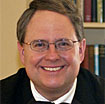Commentary on 1 Corinthians 15:1-11
Today’s Gospel lection again competes for the preacher’s attention with another of the New Testament’s choice epistolary texts.1
1 Corinthians 15:1-11 is the oldest of all testimonies to our Lord’s resurrection by one among many eyewitnesses, the apostle Paul.
Here or elsewhere, Paul says nothing of the place and people predominant in the Gospels, namely, the women’s discovery of the empty tomb (Matthew 28:1-10; Mark 16:1-8; Luke 24:1-11; John 20:1-18). It’s easy to suppose that Paul knew these traditions familiar to us from the Gospels, committed to writing two to five decades after his letter to Corinth. However, writing in A.D. 54, he may not have known them. Indeed, the point at which 1 Corinthians 15 stands closest to the Gospels is the identification of Simon Peter (Cephas: verse 5) as among the first to whom the risen Lord appeared (cf. Mark 16:7; Luke 24:34; John 21:1-8).
1 Corinthians 15:1-7 presents rudiments that another lection, Acts 10:34-43, elaborates:
- A reminder of the gospel’s original terms (1 Corinthians 15:1, Acts 10:36)
- The necessity of preaching (1 Corinthians 15:1, Acts 10:42)
- The faith in which the church stands (1 Corinthians 15:2, Acts 10:43)
- Handing down the tradition and story of Jesus (1 Corinthians 15:3, Acts 10:37-39a)
- Christ’s death (1 Corinthians 15:3, Acts 10:39b)
- The forgiveness of sins (1 Corinthians 15:3, Acts 10:43)
- The connection to the scriptures (1 Corinthians 15:3-4, Acts 10:43)
- Christ’s resurrection on the third day
- Christ’s appearance to Cephas, the Twelve, and many others (1 Corinthians 15:5-8, Acts 10:41)
These parallel testimonies of Christ’s resurrection may be largely independent of each other, approaching something like bedrock of the primitive church’s formative Easter witness. It would be no small thing this Easter Sunday for the preacher simply to remind the church in what terms it first received the gospel by which it still is saved (1 Corinthians 15:1-2).
1 Corinthians 15:1-2 set the stage for Paul’s preoccupation in 15:12-58: how to answer those who say there is no resurrection of the dead. Although logically implied by that issue (see 15:13-19), that’s not the problem Paul addresses in 15:3-11. I doubt that’s the problem most preachers would or even should tackle from the pulpit on Easter Sunday. 1 Corinthians 15:3-11 has other concerns. Today is the day for congregants to examine them.
Verses 3-7 articulate the heart of the Christian gospel–“Christ died for our sins”–and the primary means by which Christians have considered that claim substantiated. After having really died (“he was buried” for “three days”), Christ was raised from death into new life. God was the one responsible for that raising. And if this Jew was raised and no one else, then by that resurrection God irrevocably committed himself to Jesus, who likewise had held back nothing for the sake of God’s kingdom.
This happened “in accordance with the scriptures.” Jesus’ death was so momentous that it dealt with human sin against God, and it was validated by the only God capable of undoing that death and bestowing life. Accept that, and such a death and resurrection had to accord with the character and intentions of the God whom we meet on the pages of the Old Testament. The Chief Justice has decided the case in favor of Jesus, consistent with Israel’s Constitution, in a verdict corroborated by competent witnesses.
The risen Christ appeared to Cephas, to the Twelve, to over five hundred disciples, to James the brother of Jesus and to the rest of the apostles (see Galatians 1:17-18; 2:1-10). Paul is adamant that he didn’t make all this up. In good rabbinic fashion, he delivered to others what he had first received. This is the church’s common legacy. Following the apostles’ lead, the church is responsible to hand it down to a new generation.
“Last of all, in miscarriage [to ektromati] as it were, he appeared to me, too” (1 Corinthians 15:8). This is the lection’s transitional hinge. We move from the caravan of witnesses (verses 5-7), to the last witness (verse 8), then to Paul’s self–assessment of his own apostleship (verses 9-11).
Now Paul speaks of the resurrection’s personal impact. Like the autobiographical flashes in other letters (2 Corinthians 11:21b–12:10; Galatians 1:11–2:14; Philippians 3:4b-11), 1 Corinthians 15:9-11 is an all too human mixture of self–recrimination (“unworthy of being called an apostle”), vanity (“yet I toiled more than any of them”), second–guessing (“though not I but God’s grace with me”), shrugging (“whether I or they”), and confidence (“so we preached and so you believed”).
By his own admission, Paul was the unlikeliest of apostles, not because he considered himself inadequately religious (quite the contrary: 2 Corinthians 11:22; Galatians 1:14; Philippians 3:4-6), but rather because he had tried to destroy God’s church (1 Corinthians 15:9; Galatians 1:13; Philippians 3:6). That venture’s monstrosity may lurk behind his self–caricature as “a deformed fetus.” “But by God’s grace I [now] am what I am; and his grace, which is in me, wasn’t in vain” (1 Corinthians 15:10).
Between these poles, the communal and the personal, swings the message of Easter. If it’s only a creed that never touches us, or merely a “me and Jesus” project untouched by the church, then a gestation has not yet proceeded to term. Those untimely born stir in our pews and, on occasion, from our pulpits.
On the Day of Our Lord’s Resurrection, we may be surprised to realize in faith that no longer is it we who live but rather Christ who lives in us; a life transfigured by God’s Son who loved us and gave himself for us (Galatians 2:20).
1. This commentary was first published on this site in conjunction with texts for April 12, 2009.


April 5, 2015